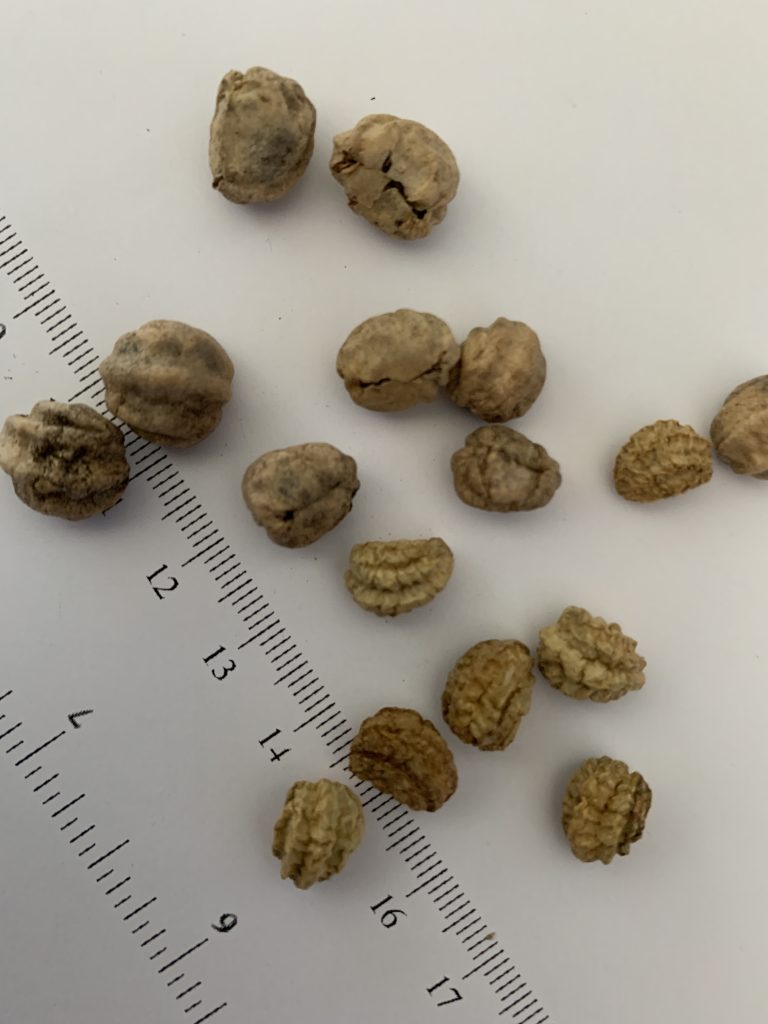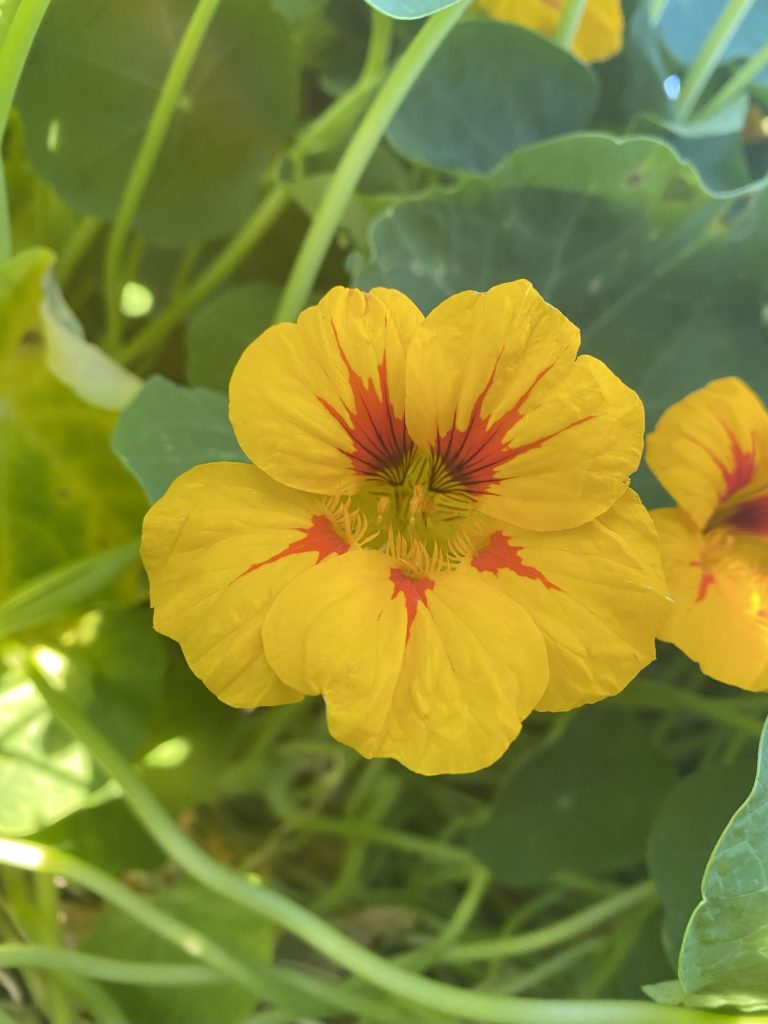Botanical name : Tropaeolum majus
Common name : Nasturtium, Indian cress, monk’s cress
Easy to Intermediate difficulty for seed saving
Lifecycle: Annual or short-lived perennial in warm climates
Pollination: Insect pollinated
Mating system: Perfect flowers
Suggested spacing: Same as for eating production
Seed specific requirements: none
Isolation distance: 250 m if saving a specific variety
Population size: 5
Seed maturity: Seed is mature when the large seed capsules change colour to light tan or brown.
Processing method: Dry sieve and winnow if required
Expected seed viability: 3 years
Images



Growing for seed
Nasturtiums are an easy plant to grow. There are no special requirements for seed saving unless a particular variety is being grown for seed, in which case it needs to be isolated from other nasturtiums by 250 metres.
Selection
Many gardeners chose to mix many different colours and leaf forms in their gardens. In this case seed can be kept from any plants attractive to the gardener. Those keeping a particular variety going will need to select for the flower colour and leaf form, including variegation, that is appropriate for that variety and isolate by 250 m from other varieties of nasturtiums.
Harvest
Seed forms in clusters of three capsules that are large enough to handle easily. These capsules change colour to tan as they ripen and will become dry and light. They can often be found lying on the ground under a carpet of nasturtium plants. As long as the weather has been dry, they can simply be picked up and dried in a protected location.
Seed is mature enough for picking as soon as they begin to change colour from green. If large quantities are being harvested, then waiting until a large proportion of the capsules are starting to change colour the whole plant can be cut and dried on a tarp. Drying plant material needs to be protected from rain.
Processing
The large seed are fairly easy to separate from unwanted plant material using large mesh sizes. For smaller quantities they can be picked out by hand.
As a large seed they may take a considerable time to dry complete so keeping them in a paper bag for several months may be required before being placed in sealed longer-term storage.
Contributors
Liz Worth, Nellie Pryke
